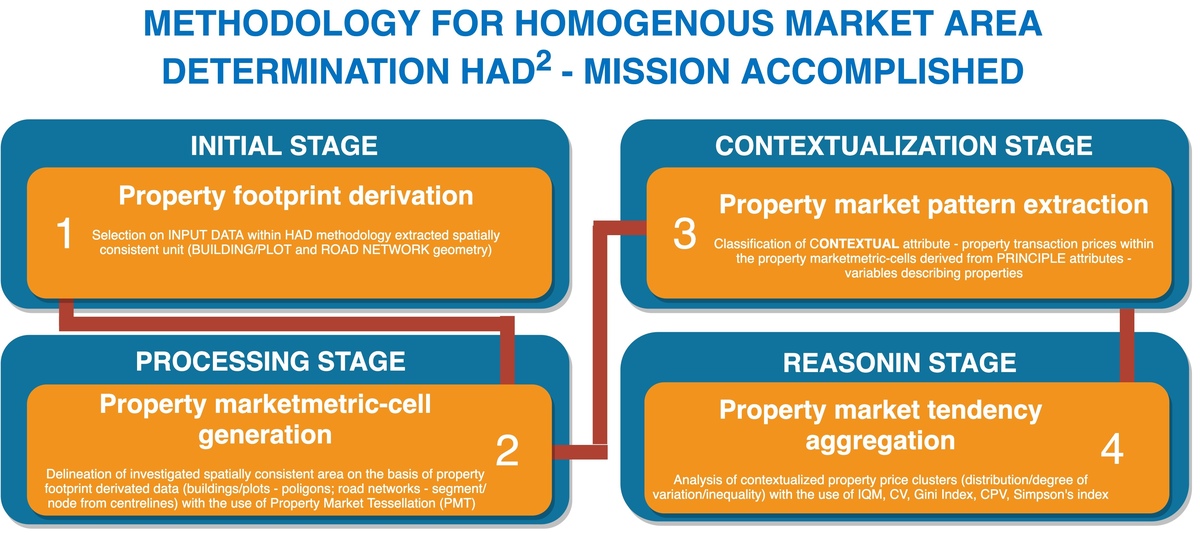Current issue
Online first
Archive
About the Journal
Aims and scope
Editorial Board
International Editorial Board
List of Reviewers
Abstracting and indexing
Ethical standards and procedures
REMV in Social Media
Contact
Instructions for Authors
Instructions for Authors
Manuscript formatting template
Title page
Highlights
Payments
‘Ghostwriting’ and ‘Guestauthorship’
Guidelines for Referees
Editor's Choice
Methodology for homogenous market area determination HAD2 - mission accomplished
1
Department of Real Estate and Urban Studies, University of Warmia and Mazury in Olsztyn, Poland
Submission date: 2024-12-18
Final revision date: 2025-01-06
Acceptance date: 2025-02-02
Publication date: 2025-03-14
REMV; 2025;33(1):113-124
HIGHLIGHTS
- utilizes HAD2 methodology for property market area delineation
- introduces the definition of property market tessellation
- improves transparency in property market analysis via evidence-based comparisons
- enhances real estate market consistency evaluation
KEYWORDS
TOPICS
ABSTRACT
Property market delineation or determination of areas signifying property market consistency has been a subject of scientific investigation by a variety of researchers from different perspectives. Some explored it for the purposes of decision-making support systems, others for, for example, zoning or housing policy. The theory of property valuation also did not remain indifferent for spatial extraction of homogenous market areas. The following paper constitutes a several-year study within that area. Following the trace of thought formulated by John Maxwell that “every step back is a chance to look at your goals from a different perspective”, the study being based on, amongst others, the method of historic research and critical analysis, ultimately organizes and complements the author’s contribution to the scientific discussion, and in that scope is one of the substantial issues included in the concept of spatial management. It contributes to the current state of the art discussion by introducing the definition of property market tessellation, utilizing it for the purposes of original HAD2 methodology implementation.
FUNDING
The publication was written as a result of the author's internship in the School of Government at the University of North Carolina, USA, co-financed by the European Union under the European Social Fund (Operational Program Knowledge Education Development), carried out in the project Development Program at the University of Warmia and Mazury in Olsztyn (POWR.03.05. 00-00-Z310/17). This work was also supported by the IAAO Research Grant.
Share
RELATED ARTICLE
We process personal data collected when visiting the website. The function of obtaining information about users and their behavior is carried out by voluntarily entered information in forms and saving cookies in end devices. Data, including cookies, are used to provide services, improve the user experience and to analyze the traffic in accordance with the Privacy policy. Data are also collected and processed by Google Analytics tool (more).
You can change cookies settings in your browser. Restricted use of cookies in the browser configuration may affect some functionalities of the website.
You can change cookies settings in your browser. Restricted use of cookies in the browser configuration may affect some functionalities of the website.




